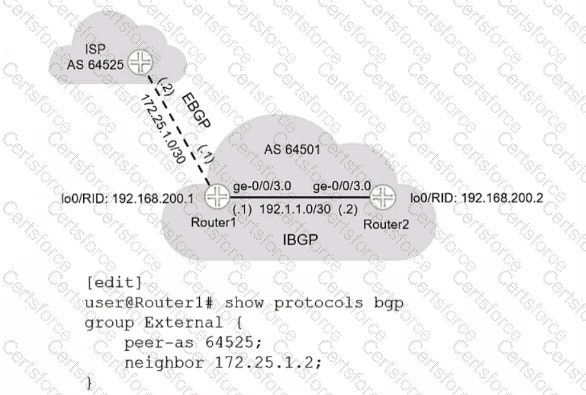You are asked to configure an LSP which uses the OSPF link state database for path computations. Which two statements are correct in this scenario? (Choose two.)
Exhibit

Referring to the exhibit, what must be included in the Route1 configuration when establishing an EBGP session with the ISP?
You are bringing a new network online with three MX Series devices enabled for STP. No root bridge priority has been configured. Which statement is true in this scenario?
Which BGP attribute Is used to detect touting loops?
Click the Exhibit button.

Referring to the exhibit, from which device(s) does R3 learn about Route X?
You are bringing a new network online with three IS-IS routers using default Junos election priorities. The routers are configured as Level 2 only IS-IS routers. Which statement is true about the DIS election in this scenario?
Which two statements are correct about IS-IS? (Choose two.)
Exhibit

Referring to the exhibit, what is the minimum number of LSPs required to support alt four networks?
Which configuration selling prohibits a static route from being redistributed by a dynamic routing protocol?
An OSPF router does not have a router ID configured.
In this scenario, which statement is correct about the router ID?